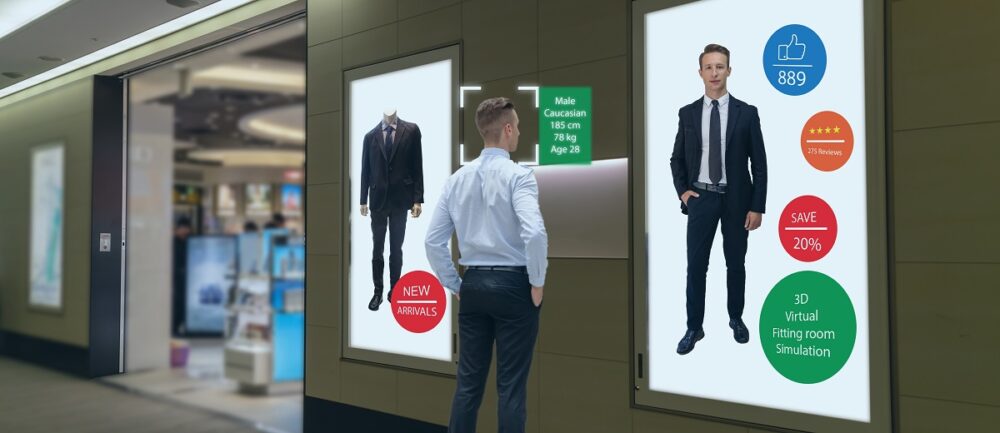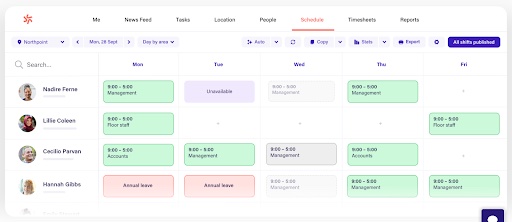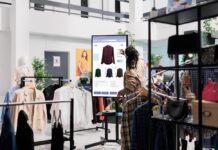For a solid few years now, the Internet of Things (IoT) has been rapidly ushering in a digital revolution – or otherwise known as Industry 4.0.
IoT is the network of physical objects or “things” embedded with electronics, software, sensors, and network connectivity that enables them to collect and exchange data. Industry 4.0 is one in which all aspects of the retail experience – both on the front end and the back end – are in communication for the most efficient and optimal outcome.

In the retail sector, IoT is already starting to have a huge impact. Here are 5 trends that will dominate the retail industry in 2022, as a result of IoT.
1. Customer satisfaction tracking
By carefully observing how customers respond to product placement, advertising, and store setups, retailers can make changes to appeal to their target customers. AI-powered facial recognition is one of the most efficient ways of doing this, as the technology has become advanced enough to read facial expressions and emotions.
With the right development, facial recognition technology will be able to analyse customer behaviour across entire stores, and therefore the psychology behind their customer journey. Which products did they gravitate toward? Did they frown at certain prices or store setups? Were any products picked up and then put back down again?
The collected data can then be used to present customers with prices and advertisements to increase their chances of buying. It’s an excellent way to increase the odds of making sales.
The company FaceMe is already selling facial analysis technology to retailers, which tells us that the technology already well and truly exists; it’s now just a matter of growing in popularity among retailers.
FaceMe tech is equipped with the capacity for “assessing and charting emotions: happy, sad, angry, surprised, indifferent, etc. This analysis can help to evaluate, and if needed, make adjustments to areas such as pricing, displays, and customer service.” (Source)

2. Next-level cybersecurity
According to Palo Alto Networks, 57 percent of IoT networks are susceptible to hacking. If hackers can access one device, they tap into an entire network of interconnected devices – thus putting retailers at risk of theft of customer data, as well as sabotage of critical systems.
Thankfully, new AI technology has been developed which uses endpoint security to detect and shut down threats in real-time. Rather than having to clean up a sticky situation after multiple devices have been hacked, threats are shut down before they can cause any real damage.
SentinelOne is a cutting-edge company that is paving the way for this new technology. They take a proactive approach to cybersecurity, using AI detection to identify, analyse, and eliminate threats as they approach IoT systems.
3. Visual search and inspection
There are a number of applications for photo recognition-based AI tech in retail. On the front end, customers can upload an image to their device, and the in-store photo recognition technology can then locate any similar items on the shelves.
On the back end, keeping stock at the right levels and detecting when something is moved or misplaced can both be achieved via this technology. Highly intelligent cameras can consistently monitor warehouses and stores, collecting data on stock levels, out-of-place items, inefficiencies, and more.
Japanese IoT company LiLz Gauge has produced camera technology that can perform daily inspections on sites like warehouses and production lines. The tech saves companies hours upon hours of inspection time, and certainly has the potential to play a much bigger role in the retail space.
4. Easier people management
AI-powered HR management software is on the rise, with software being developed for scheduling, invoicing, and more. IoT software can create artificially optimised schedules based on employee data and resource cost trends, saving companies money on people power.
Deputy is one company already at the forefront of people management technology. The platform allows retailers to build a retail employee scheduling strategy based on specific employee and store performance data, meaning that schedules are optimised to suit both the employees’ and the store’s needs.

5. Price adjustments and predictions
Stores can use technology with input from industry data on what products are selling best and what prices are competitive. This allows retailers to maintain optimal prices at all times, even allowing them to change from one day to the next with digitised price labels.
The implications of this are significant; with digital price labels, retail stores could potentially change their prices in real-time rather than waiting for the next time prices can be adjusted manually store-wide. Datasembly is one such tech company that provides retailers with real-time data on competitor prices so that they can respond promptly.
Summary
In 2022, IoT is enabling industries like retail to reach heights once considered impossible. The technology is well and truly there; retailers simply need to become aware of the possibilities, and begin implementing changes to stay ahead of the curve.

Rob is a content marketing manager at Deputy, a robust scheduling software that can be used to manage your workforce in a wide variety of different industries. Aside from helping businesses reach operational efficiency, he keeps up to date with the latest trends in SaaS, B2B, and technology in general.
🏆
Creative Retail Awards - TICKETS NOW ON SALE!
19 September 2024, London
Join the excitement and prestige of the Creative Retail Awards, the ultimate celebration of innovation and excellence in retail, leisure and hospitality design, offering unparalleled opportunities for recognition, networking and celebration.
www.creativeretailawards.com



















